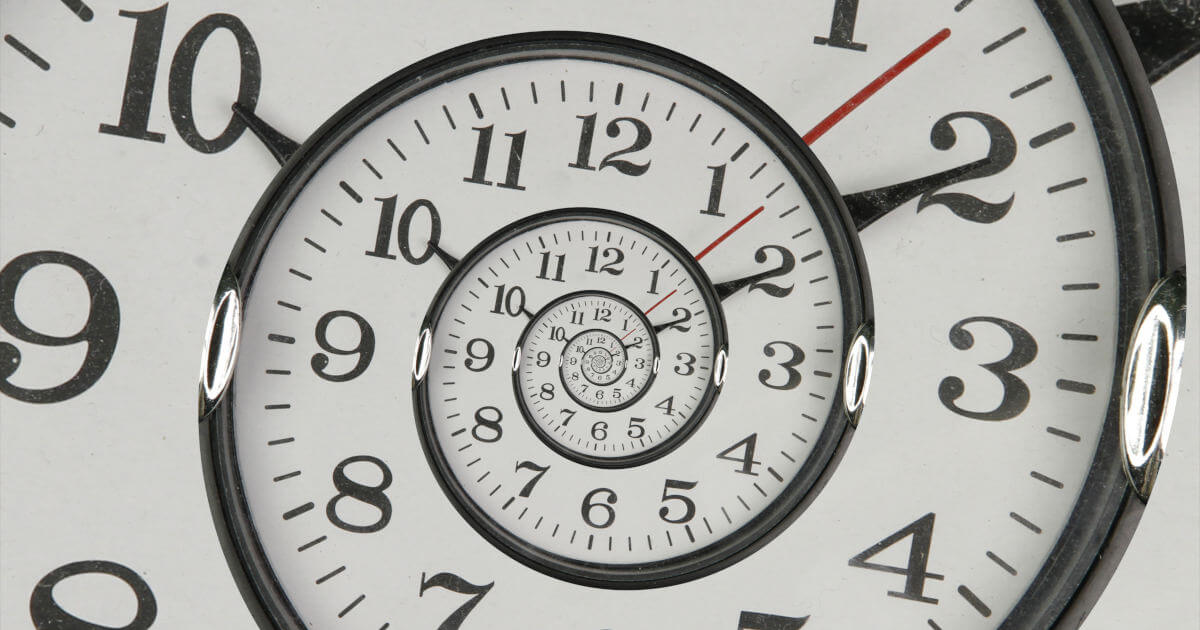Time tracking systems: A comparison of different solutions
Accurate time tracking is equally important for the employer and the employees. Supervisors can use these systems to ensure that employees are meeting the number of hours agreed upon in their contracts. Meanwhile, employees can avoid unpaid overtime by accurately recording their work hours. However, time tracking only works if there is an effective system in place.
What this system looks like depends heavily on the company’s requirements and characteristics. There is a variety of solutions available that is tailored to different needs. For example, you can find purely software or hardware solutions as well as solutions in app form for mobile devices. To help you decide which time tracking system is right for you, you will find an overview of the various options below.
An introduction to the various time tracking systems
A comprehensive computer-operated time tracking system is not the right fit for every company. This is especially true for small companies for which the required costs would outweigh the results. For other companies, this solution is not the right fit because their employees do not all work in the same place. So, what are some other options?
A time tracking system does not necessarily have to be used to document the total number of hours worked. It can also be used to record the hours spent on projects or specific tasks.
Pen and paper
Even today, many small companies use a paper schedule (i.e. a timesheet) on which employees record their work hours themselves. The most obvious advantage of this type of time tracking is the almost non-existent cost. In addition, it requires very little effort to explain to employees how to use this system. When using a simple table, it should be self-explanatory.
There is one thing you need to keep in mind, and this is one of the disadvantages of using this type of manual system: the data will also need to be analyzed by hand. If the employees only record their start and stop times, the supervisor or the HR department will need to calculate the number of hours worked from this and add them up. On top of that, there is the effort it takes to file the data from this system.
Therefore, the company’s size is an important deciding factor. The fewer employees the company has, the less additional work there is to do. Whereas, if there are dozens of employees’ timesheets to process, investing in an electronic solution can pay off.
An easy compromise solution for time tracking is to use an Excel spreadsheet. The defined formulas in the spreadsheet will take care of calculating the number of hours worked. We have prepared an Excel spreadsheet template and instructions for you in another article so that you do not need to waste time creating one.
This system also provides employees with more opportunities to stray from the truth. While other time tracking systems record time automatically and are more difficult to tamper with, this solution relies heavily on the honor system. Despite there being some degree of scrutiny provided by colleagues, the timesheet only works if the employer trusts their employees.
| Advantages | Disadvantages |
|---|---|
| Intuitive to use | A lot of additional work |
| Very cheap | Prone to errors and cheating |
The hardware solution
When considering time tracking devices, many people will first think of the traditional time clock. In brief, it is a device in which an employee enters a card to receive the current time stamp. They do this when entering or leaving the company. As with the manual paper version, the number of hours worked has to be calculated by hand when using this (now obsolete) version. Moreover, filing the data once again provides additional work. However, this type of machine does have an advantage in its ease of use. It also makes it much more difficult to be dishonest when recording work hours.
Nowadays, companies have largely abandoned the traditional time clock while retaining the advantages of this time tracking system. Electronic and digital hardware solutions provide an easy-to-use device, which is relatively tamper proof and standardizes data processing. These solutions also avoid the disadvantages associated with the manual time clock: New systems automatically calculate the hours and also automatically file all the data.
Using smart tokens or smart cards (in an RFID format) or even a fingerprint, employees can identify themselves on the device and simultaneously trigger the time stamp. However, the digital time stamp is not stored on the employees’ smart token or card. It is stored directly on the device. The data can then be read using software or a web interface. All data is processed transparently and cross-checked. In many cases, employees can also check their work hour accounts or make additional changes via a display on the hardware.
While this digital time tracking system is easy to use, it does have two disadvantages. The first is that smaller companies are likely to shy away from the often-high associated costs. After all, when calculating the costs, you need to consider not only the devices but also the corresponding chips for each employee, potentially a device to program the chips, and perhaps even a license for the required software. The second is that these types of digital time clocks can only be used as a stationary device. This means that if an employee is working in the field for example, they will not be able to log their hours during the day.
| Advantages | Disadvantages |
|---|---|
| Very easy to use | Relatively high price |
| Accurate time tracking | Can only be used as a stationary device |
| Automatic calculation | |
| Not dependent on other software | |
| Fairly tamper proof |
Mobile apps
If you have employees who do not work in the office but rather in their home office or out in the field, there are also mobile solutions available for time tracking. Employees can always carry a time tracking system with them using a smartphone app. Nowadays, there are a variety of mobile applications for this purpose, and most of them are easy to use. Employees can record their start and stop times in just a few steps. Additionally, many apps offer other useful features. For example, employees working in the field can provide extra information themselves about their current task, such as the name of the client they were with that day.
The GPS tracking used in smartphones means that data about your location can also be recorded in a time tracking system. This type of system also often allows you to keep a logbook as well as to record the time spent on specific tasks and projects. Supervisors or the HR department can then check and evaluate all the data in an online application.
A mobile time tracking app thus functions as a digital timesheet, which can sometimes have the same advantages and disadvantages. This type of system relies heavily on trust, which is mainly due to the nature of working in the field. Nevertheless, these mobile apps are relatively easy to use and are usually reasonably priced in comparison with comprehensive hardware solutions.
Business owners usually have a variety of packages to choose from when selecting the right product for the size of their business. One thing to keep in mind is that every employee will need a smartphone. If your employees have not been provided with company-owned devices, the app will need to run on personal devices. Therefore, you will need to look into which mobile operating systems support the app in advance.
All time tracking systems need to comply with the GDPR. Since mobile solutions allow you to collect additional data (e.g. location tracking), you will need to be transparent about what is permitted and whether the apps are compliant with the standards.
| Advantages | Disadvantages |
|---|---|
| Mobile use | Requires a smartphone |
| Easy to use | |
| Automatic calculation | |
| Many additional features |
The software solution
Just as there are apps for your smartphone, you can also find software solutions for your office PC. These time tracking systems are usually similar in structure to the apps. When using software, the admin sets up all employees with their personal work hour records. The program is also installed on the employees’ computers. As soon as their workday begins, they can start tracking their work hours with just a click of their mouse. They can also track their breaks and work end times just as easily.
Supervisors can access all data via an administration interface and, this way, check the work hour records for each employee. Additionally, time tracking software usually allows employees to enter their vacation times, sick leave, and public holidays. Therefore, no additional administrative work is required.
The only real disadvantages of this type of solution are the costs (with regular licensing fees being common) and the fact that it has to be installed on a PC, which usually needs to be turned on in the morning. As a result, if time tracking can only be started with a mouse click, work hours might not be accurately recorded. Moreover, the use of this type of solution for mobile work is limited and would require a laptop at the very least.
Time tracking software is often available in several different versions. Some providers also offer apps and programs which can work together seamlessly with digital time clocks. Therefore, you can combine different work models in a single time tracking system.
| Advantages | Disadvantages |
|---|---|
| Easy to use | Tied to hardware |
| Many options for configuration | Not suitable for mobile use |
| Automatic calculation |
Online time trackers
Online time trackers are useful when you need employees who work from their home office or a mobile office to track their work hours using the same application. These tools allow employees to access the system via their browser. As with desktop software, employees record their work hours in the web portal. Meanwhile, supervisors can access all the recorded hours in an overview. This system also allows employees to enter additional information as well as absences and days off.
Since online applications can be used via a standard browser, they have fewer compatibility problems when compared with software solutions. As long as the users are using an up-to-date browser, they should have full access to all functions, regardless of the hardware or operating system being used. Ideally, the application will even offer a way to interact with other programs, such as with payroll accounting to make the process easier. For data protection purposes, you need to secure where data is stored and who has access to it.
| Advantages | Disadvantages |
|---|---|
| Primarily accessed via a browser | Data stored online |
| Can be accessed anywhere | |
| Not tied to a system | |
| Automatic calculation |
A comparison of time tracking systems
Which time tracking system you should choose largely depends on your company and its requirements. While many smaller companies prefer inexpensive basic solutions, large companies can afford to invest in more sophisticated solutions. In some cases, the right solution may be a mix of different systems. If you opt for a mix, you should make sure that the solutions come from the same provider or at least that they are compatible with each other.
| System | Target group | Ease of use: User | Ease of use: Admin | Price |
|---|---|---|---|---|
| Timesheet | Small companies | ** | * | *** |
| Hardware | Large companies | *** | *** | * |
| App | Small and medium-sized companies | ** | *** | ** |
| Software | Small and medium-sized companies | ** | *** | ** |
| Online | Small and medium-sized companies | *** | *** | ** |
Click here for important legal disclaimers.



